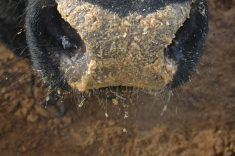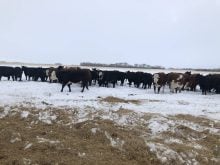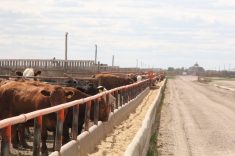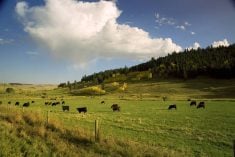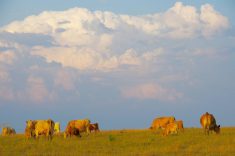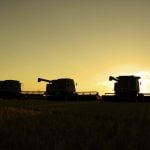It took the tragic earthquake in Japan to halt a historic first quarter rally in U.S. fed cattle prices. As horrific as the earthquake and tsunami were, they are unlikely to have much impact on U.S. beef or pork exports. In fact, early talk was for a possible spike in shipments in April as Japanese retailers and others start to replenish depleted supplies.
None of this mattered to futures traders in the two sessions after the earthquake. They sold both live cattle and lean hog contracts heavily. The latter suffered the bigger setbacks. But nearly all live cattle futures closed down their daily limit of 300 points the second day, which meant the April contract fell 362 points over the two days to $113.50. This caused cattle feeders to sell cattle at $114-115 per cwt., $3-4 lower than the week before.
Read Also

Linking human evolution to leadership on the ranch
Simon Sinek’s new book explains why leaders need to foster a feeling of belonging, trust and co-operation in their organizations
Live cattle prices prior to the reversal had defied gravity with a $13.58 per cwt rally from the start of February to mid-March. In just six weeks, average prices went from $104.31 to $117.89, setting new all-time weekly records four weeks in a row. All boats rise in such a tide and thus prices for fed steers and heifers in Western Canada increased around C$5 per cwt. as well the second week of March. Steers averaged C$108.95 while heifers averaged C$108.39. While Canadian cattle feeders would have liked to see a much narrower basis between their prices and U.S. prices, they benefited from the remarkable rally in the U.S. in two ways. Domestic prices increased and cattle feeders who shipped cattle south got much more money than anticipated.
Much was made of the rally being driven by stronger domestic and export demand. After recording a record year in 2010 in value terms ($4.08 billion), beef exports in January increased 24 per cent in volume and 43 per cent in value from January 2010. While impressive, it’s worth remembering that exports account for only 11 per cent of total U.S. beef production. So an improvement in domestic demand, mostly at retail, was arguably much more significant. January retail prices in USDA’s All Beef series increased 3.4 per cent in January from December and likely increased by a similar amount in February.
Another key factor was that the supply of market-ready cattle in February and March was tighter than expected. The large number of lightweight cattle placed in feedlots last fall pushed cattle on feed inventories well above last year (up 5.6 per cent on February 1). This lulled some people into thinking that market-ready supplies were larger than they were. In addition, a severe bout of winter weather reduced carcass weights. So packers harvested more fed cattle in February and early March than expected, and paid dearly for them.
Given the impact of Japan’s disaster on the live cattle market last month, it’s difficult to forecast the market’s direction in the next month. But unless something even more catastrophic occurs in Japan, U.S. beef sales there should be little affected. Japan in 2010 represented 15.7 per cent of total U.S. beef exports in value and 11.7 per cent in volume. Exports to Japan in January rose nearly 70 per cent in both volume and value from a year earlier. The destruction in northern Japan was truly horrific. But the rest of the country was undamaged, and Japan’s economy remains robust. Early reports suggested the disaster might disrupt export trade in beef and pork for a few weeks but that there might then be a surge in orders as Japan rebuilds its stocks. The tragedy though was a vivid reminder as to how unforeseen outside events can sometimes derail the strongest of livestock markets.
CattleBuyersWeeklycoverstheNorthAmericanmeatandlivestockindustry.Forsubscriptioninformation,contactSteveKayatP.O.Box2533,Petaluma,CA94953,orat707-765-1725,orgoto www.cattlebuyersweekly.com.
———
ANorthAmericanviewofthemeatindustry.SteveKayispublisherandeditorofCattleBuyersWeekly
———
Unless something even more catastrophic occurs in Japan, U.S. beef sales there should be little impacted



